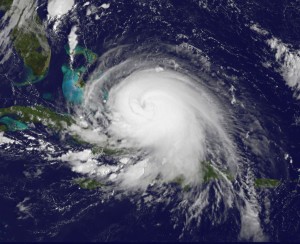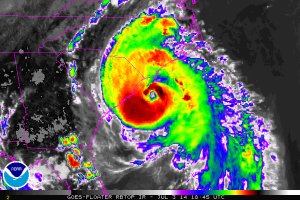I suppose it’s time to weigh in on Matthew.
I’ve gotten a lot of emails asking for an update, saying that I’ve been silent. Not really. Twitter is a fairly effective tool for quick bursts of info. And so, I encourage you to follow me there: @trextrex14
There’s a lot of good information in the media on this storm, so I’ll write this post from the perspective that you’ve heard all of that…and more. I hope to value add, to give you a couple of considerations in why the forecast could go perfectly as planned, or why it may be a total bust.
As of midday today, all the numerical guidance seemed to be converging to a tidy solution (albeit problematic in itself…for reasons I’ll talk about next). That solution had the track of Matthew basically mirroring the concave SE coastline from FL thru GA and SC to NC then curving out to sea. In this scenario, Matthew would track just offshore, pounding the coastline from FL to NC. The problematic part of this is that since the shape of the coastline and the track would be nearly the same. Any deviation of the track to the left would push the hurricane inland and significantly weaken Matthew for all locales north, i.e. less wind and surge, but still decent wind and lots of rain. So that’s what’s hard if there was just that.
However, the Euro came in this afternoon with a literal curveball. It depicted Matthew grazing the FL coast before doing a loop off GA back toward FL. Then a couple of the Euro ensemble members had loops, and several had a hard right turn near GA. Then the 18Z American ensembles came in continuing this new idea of out to sea and not up the coast. Now, hot off the presses, the 0Z dynamical guidance echoes a similar theme…out to sea.
So, at this point I would like to be able to tell you there is confidence in a solution. Tonight, there is more uncertainty than ever. Hold tight, make plans for how to be prepared, but I would say there’s no need to act upon them until we see more data. Remember we still have more than 3 days to work this out.



Recent Comments